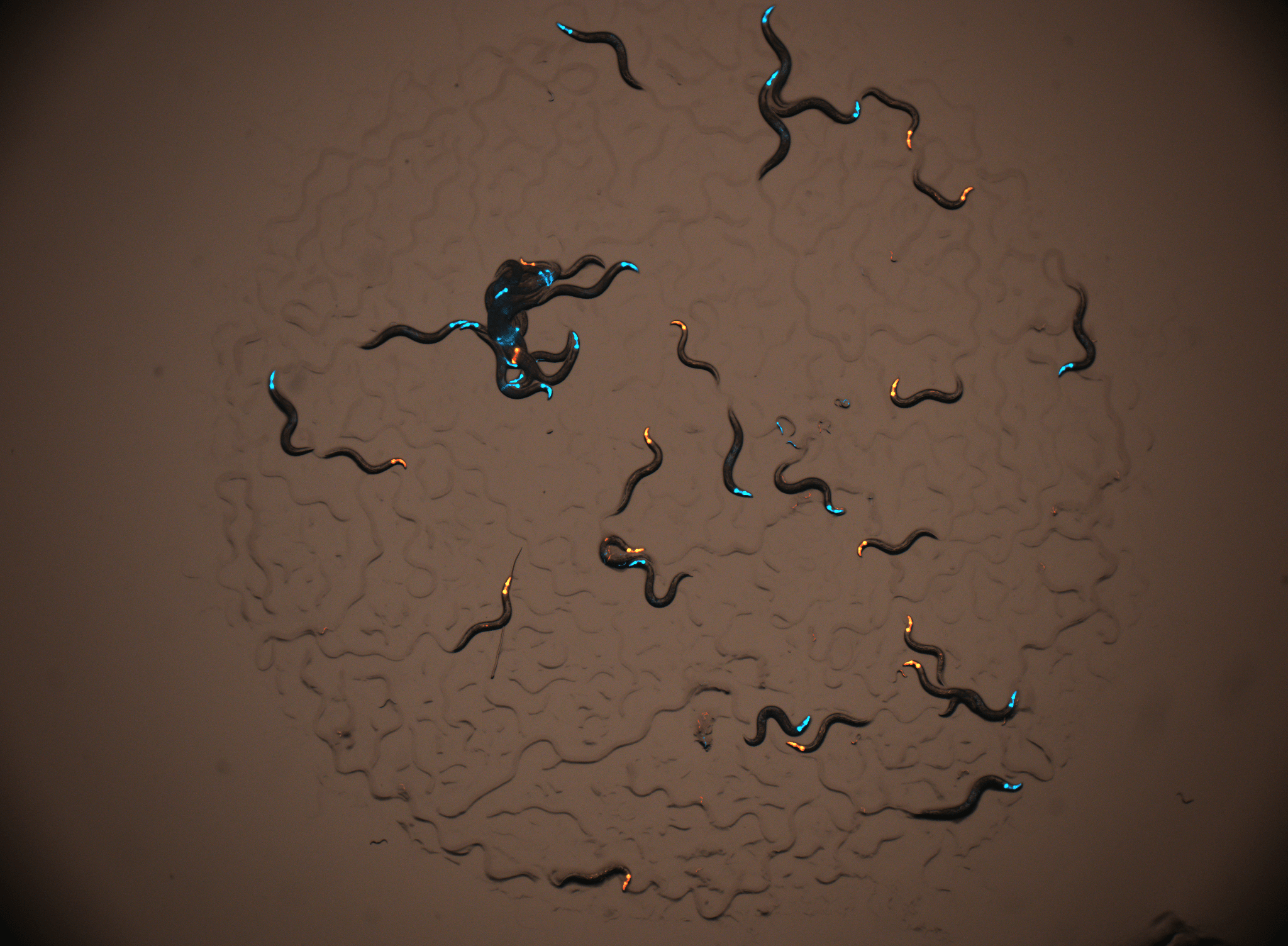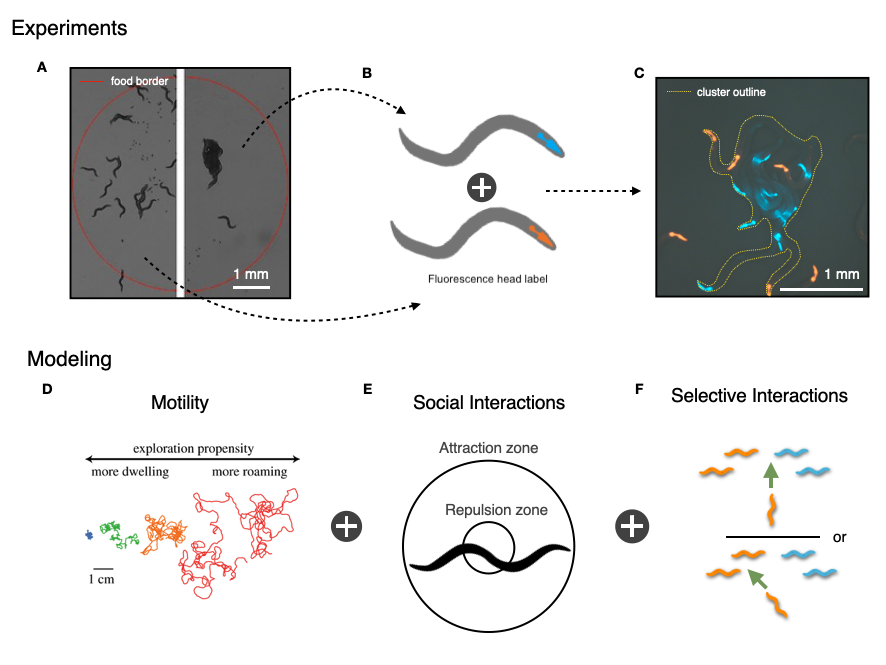Research
Current Research Projects
Animal Behavior / Collective Behavior / Complexity
WORMIX: The effect of complex social environment on the collective behavior of nematodes

Description: Aggregation is the most extensively studied collective behavior in C. elegans, where the genetic, neuronal, and behavioral mechanisms underlying solitary versus gregarious phenotypes have been well-established in two laboratory strains, the reference strain N2 and the npr-1 mutant version of it. Given the prevalence of long-range dispersal in nematode ecology, multiple strains and species of nematodes including C. elegans have been known to co-occur in the wild, thus raising the question of how they may interact together in the context of aggregation. Building upon our previous work, we are examining the effect of complex social context on aggregation behavior by mixing together two nematode strains of known characteristics and measuring the outcome at the individual and collective level. We combined the solitary lab strain with the aggregating lab strain of C. elegans; and the aggregating lab strain with another aggregating strain of wild origin. We developed a methodological framework to image, quantify, and model behavioral interactions in these explicitly heterogeneous social contexts, and found no evidence of direct behavioral modulation by conspecific or heterospecific individuals. We are currently applying the methods we developed for C. elegans to the species P. pacificus. We will combine aggregating wild strains of different relatedness from P. pacificus, where we expect to detect selective interactions due to the existence of a kin-recognition system in this cannibalistic species.

Collective Gradient Sensing in C. elegans
Description: Collective gradient sensing is a widespread phenomenon in many biological systems where individuals collectively detect and respond to environmental gradients with increased accuracy. However, whether collective sensing exists for C. elegans is rarely looked at and not yet established. Our aim is to investigate if and how collective sensing emerges at the group level in C. elegans through individual behavioral responses to local chemical gradients (odor sources and pheromones) and via social interactions.
Worm Towers: Self-Assemblies of Worms
Description: Worm towers are fascinating examples of collective self-assemblies, where individual worms link together to form functional, adaptive structures. These towers serve as a collective dispersal strategy. This study explores the formation of worm towers, and my contribution on this work focuses on quantifying the individual behavior outside the tower and the distribution of worm sizes within the tower. By quantifying these behaviors and size distributions, we can gain deeper insights into the mechanisms driving collective behavior, understand the factors influencing tower stability, and predict how such structures might adapt to environmental changes.